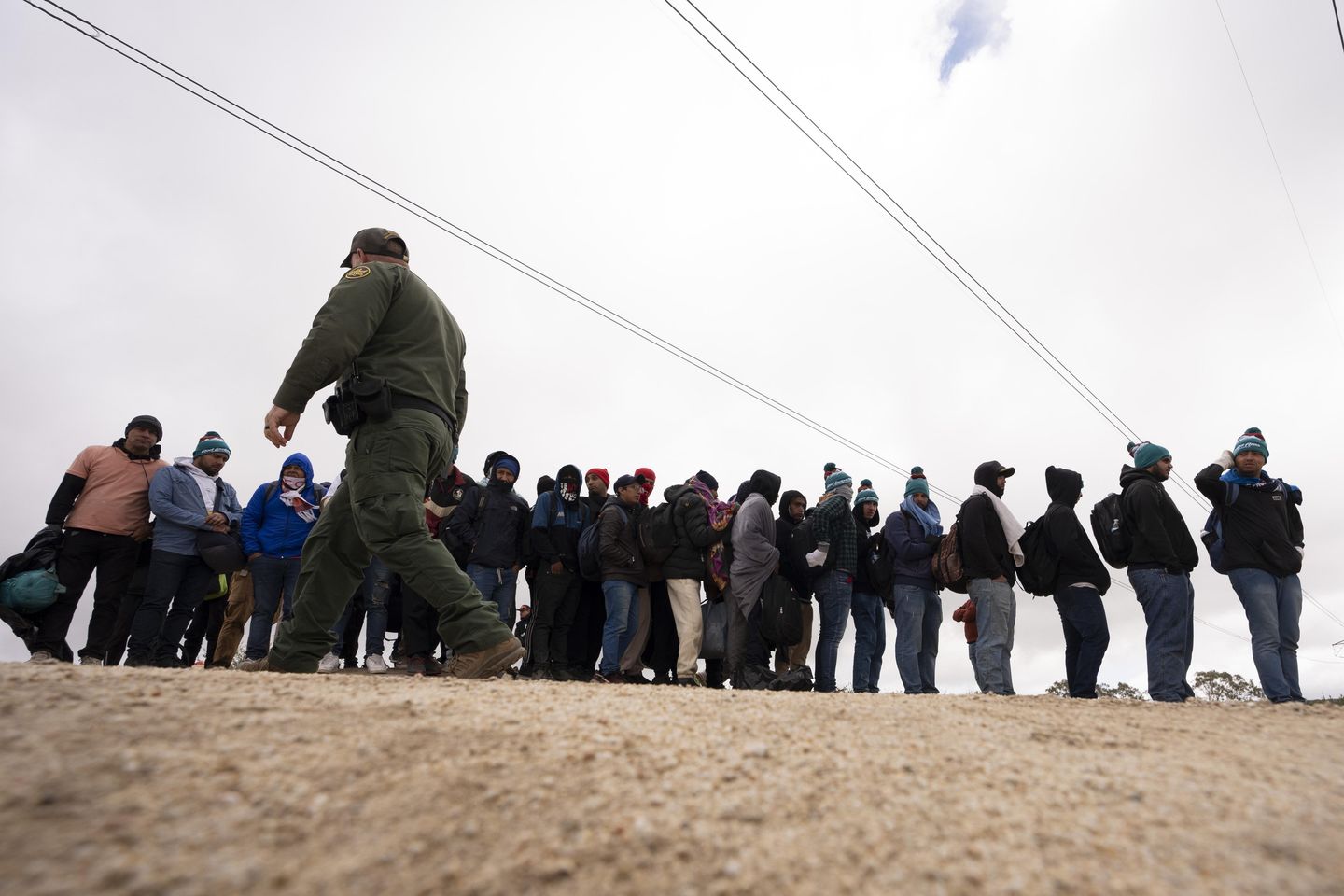
Close only counts in horseshoes and hand grenades — and now the U.S. border, where the Trump administration is battling to unravel a court decision that could rewrite the very definition of what a national boundary is.
The Justice Department has asked the Supreme Court to take up a case where a lower court ruled that being near the U.S.-Mexico boundary is as good as being on American soil when it comes to asylum claims.
The 9th U.S. Circuit Court of Appeals, which regularly delivers surprising immigration rulings, said migrants who are “on the United States’ doorstep” but still in Mexico have, at least for legal purposes, arrived in the United States and must be given a chance to claim asylum.
Solicitor General D. John Sauer called that a “serious error” and begged the justices to correct it, saying it allowed courts to meddle in the kinds of border decisions that are best left to Congress and the president.
Rosemary Jenks, policy director at the Immigration Accountability Project, was more pointed in her assessment of the 9th Circuit’s decision.
“The whole idea that you don’t have to get into the United States to get into the United States is stupid,” she said.
The case arose out of Homeland Security’s border “metering” policy, which began under President Obama in 2016 and set a per-day maximum on unauthorized migrants who could show up at a land crossing between the U.S. and Mexico to demand asylum.
Once the daily limit was reached, Customs and Border Protection officers would block other migrants from reaching U.S. soil. The goal was to prevent them from overwhelming the system.
Immigration groups, though, said the policy was illegal because it limited access to migrants making asylum claims.
Both the Trump and Biden administrations argued that the U.S. had no duty to consider asylum for people who hadn’t actually set foot on American soil. But a federal district judge, and later the 9th U.S. Circuit Court of Appeals, said those stopped before reaching the U.S. still qualify.
The law says U.S. obligations kick in when a migrant “is physically present in the United States or … arrives in the United States.”
Judge Michelle Friedland, writing for the 9th Circuit majority, said the definition of physically present was clear enough, but “arrives” was not. And she said it couldn’t only mean being on U.S. soil, because that would be redundant with the “physically present” language.
“Indeed, the government’s reading would reflect a radical contraction of the right to apply for asylum because it would give the Executive Branch vast discretion to prevent people from applying by blocking them at the border,” Judge Friedland wrote in an opinion issued in October.
She said the metering policy proved deadly for some migrants who got stuck in Mexico waiting for their chance to cross.
Some were murdered and others attempted to cross by other means, such as swimming the Rio Grande, where they drowned. That included young children, the judge said.
Judge Ryan Nelson disagreed with Judge Friedland, saying she ignored basic English in order to make up new law.
He said the phrase “arrives in the United States” means just what it seems to mean, and pointed to the linguistic example of an airplane arriving at an airport.
“Did the plane ’arrive’ when, circling miles above the city, the captain announced that the plane was cleared to begin its descent? Of course not,” he wrote.
He said the court’s ruling subverted the notion of a border.
“A person at the border, but on the Mexican side, might be close to the United States. She might have arrived at the United States border. But until she crosses the border, she has not arrived in the United States,” he wrote. “This is not just the best reading of the statute; it is the only reading.”
Asylum is the protection given to people inside the U.S. who are fleeing persecution. Refugees are those who seek the same protection but are outside the U.S.
Ms. Jenks said if the majority’s ruling stands, it would open all sorts of troubling questions about where the actual line would be drawn.
“That’s the whole point of the border,” she said. “If the Border Patrol patrolling the border can’t block people from coming into the United States, what are they doing here? The job of the Border Patrol is not just to round up people who want to come in, and bring them in.”
Despite the legal arguments, the Biden administration canceled the metering policy in 2021 as part of its attempt to erase Trump-era immigration policies.
The legal controversy is still alive, though, Mr. Sauer argued to the high court.
The Justice Department filed its petition with the Supreme Court this month asking the justices to take the case. No response has been filed by Al Otro Lado, and the group didn’t respond to requests for comment.
It would take four justices to agree to hear the case.
The case is Noem v. Al Otro Lado.









